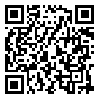جمعه 28 شهریور 1404
چکیده: (303 مشاهده)
Purpose: This study examined how Low-dye tape and Navicular Sling Kinesiotape impacted athletic performance in performance fatigue condition in basketball athletes with flat feet.
Methods: The current research was conducted on 12 professional basketball players between 18_25 years old with flat feet. Staheli Index, Y balance, 20-meter speed, modified T-test, and Sargent tests were employed to assess flat foot, dynamic balance, speed, agility, and power. A basketball-specific performance fatigue protocol was used to induce performance fatigue, and treatments included low-dye taping and Navicular Sling Kinesiotape.
Results: Statistical analysis indicates that Low-Dye taping significantly improves dynamic balance in both fatigued (P = 0.01) and non-fatigued (P = 0.01) conditions (F = 18.33). Additionally, performance fatigue negatively affects dynamic balance in both Low-Dye taping and non-taping conditions (P = 0.01). It also leads to impaired performance in the 20-meter speed test in the low-dye and Kinesiotape conditions (0.49 and 0.60), a 3.75 cm reduction in the Sargent test in the non-taping condition. Additionally, Low-Dye taping condition leads to a 0.68-second decreased in agility performance record.
Conclusion: While fatigue did have an impact on performance, low-dye taping, and Navicular Sling Kinesiotape resulted in a smaller performance decline compared to non-taping conditions. In addition, low-dye taping had a greater effect on performance and flat foot than did Navicular Sling Kinesiotape. Basketball players with flat feet are recommended to use low-dye taping and Navicular Sling Kinesiotape.
Methods: The current research was conducted on 12 professional basketball players between 18_25 years old with flat feet. Staheli Index, Y balance, 20-meter speed, modified T-test, and Sargent tests were employed to assess flat foot, dynamic balance, speed, agility, and power. A basketball-specific performance fatigue protocol was used to induce performance fatigue, and treatments included low-dye taping and Navicular Sling Kinesiotape.
Results: Statistical analysis indicates that Low-Dye taping significantly improves dynamic balance in both fatigued (P = 0.01) and non-fatigued (P = 0.01) conditions (F = 18.33). Additionally, performance fatigue negatively affects dynamic balance in both Low-Dye taping and non-taping conditions (P = 0.01). It also leads to impaired performance in the 20-meter speed test in the low-dye and Kinesiotape conditions (0.49 and 0.60), a 3.75 cm reduction in the Sargent test in the non-taping condition. Additionally, Low-Dye taping condition leads to a 0.68-second decreased in agility performance record.
Conclusion: While fatigue did have an impact on performance, low-dye taping, and Navicular Sling Kinesiotape resulted in a smaller performance decline compared to non-taping conditions. In addition, low-dye taping had a greater effect on performance and flat foot than did Navicular Sling Kinesiotape. Basketball players with flat feet are recommended to use low-dye taping and Navicular Sling Kinesiotape.
نوع مطالعه: پژوهشي |
موضوع مقاله:
آسیب شناسی ورزشی و حرکات اصلاحی
دریافت: 1403/8/25 | پذیرش: 1403/12/14
دریافت: 1403/8/25 | پذیرش: 1403/12/14
| بازنشر اطلاعات | |
 |
این مقاله تحت شرایط Creative Commons Attribution-NonCommercial 4.0 International License قابل بازنشر است. |



